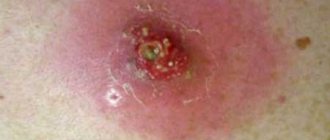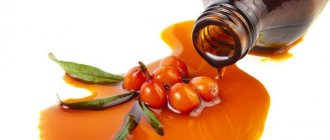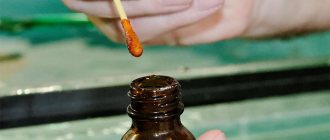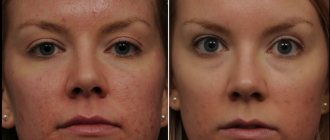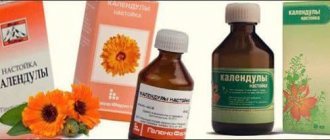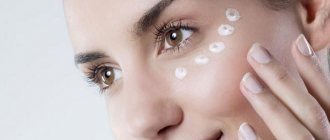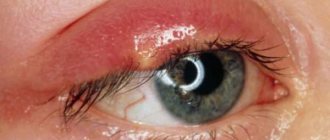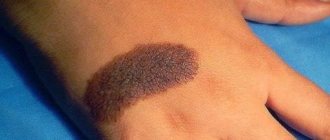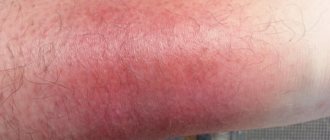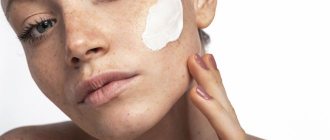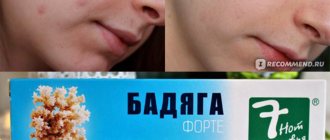The skin's reaction to electrolysis depends on many conditions. In particular, this is the degree of moisture and oiliness of your skin, the thickness of the hair being removed, the density of its growth, the method of electrolysis, current parameters, post-procedure care and features of your health that you may not even suspect.
I assume that you have already read my introductory article on electrolysis and know that moisturized normal skin is necessary for any method of electrolysis: in the case of direct current, the amount of saline fluid in the follicle determines the amount of alkali, in the case of alternating current, the heating temperature of the tissue at the end of the needle. In addition, dry skin heals more slowly. Oily skin is not necessarily hydrated, but sebum is definitely an excellent insulator. All this leads to the fact that the master will begin to increase the current parameters so that the impact is sufficient to extract the hair, while the lower and upper layers of the skin are more damaged and subsequently heal more slowly, sometimes with complications.
The next parameter is the growth characteristics of the hair itself. Typically, the finer the hair, the smaller the follicle and the lower amperage required for effective removal. The less hair grows, the less likely there is to be an overlap treatment, where the high temperature treatment area of one follicle partially overlaps with the treatment area of an adjacent follicle. This is especially true for the thermolysis technique, since in pure thermolysis the current values are usually higher than in the mixed blend method.
The material is illustrated with photographs from my archive and the archive of Joseph M. Reina, a specialist in electrolysis from Spain. The text is written based on discussions by professional electrologists and using the book “Epilation Encyclopedia: Everything about Hair Removal for Professionals and Beauty Salons” by D. Morris, D. Brown. (M.: RIPOL classic, 2008. - 400, ill.). Constantly updated.
Normal reactions:
- Erythema and edema
- Itching
- Red crusts (scabs)
- Whiteheads (hypopigmentation)
Atypical complications:
- Bruises
- Skin overheating and burns
- Infection and pus
- Post-inflammatory redness
- Scars (pits and bumps)
- Age spots (hyperpigmentation)
- Blood poisoning
Causes
Acne, boils and other types of pimples occur due to blockage of the sebaceous gland and untimely removal of pathological contents. If, as a complication, inflammation develops at the site where the pimple appeared, the situation worsens. The fact is that the infection spreads to deep tissues, as a result of which, when the rash goes away, a scar seal similar to a tubercle appears at the site of its localization. Provoking factors contributing to the development of such complications are the following:
- Improper blackhead removal. When a pimple is inflamed, it hurts, and there is pus inside, you should not rush to remove it. You need to wait until the inflammation goes away before proceeding with removal. It is important to do this carefully, with clean hands and disinfected instruments, otherwise you can introduce an infection inside, which will be more difficult to get rid of.
- Severe damage to the skin. If squeezing a pimple is done incorrectly, a person puts too much pressure on the skin around the pimple, the area immediately becomes swollen and may continue to become inflamed. Over time, a scar in the form of a lump forms on the skin at the site of the squeezed pimple.
- Lack of adequate treatment. If a person has a large rash on his forehead, nose, cheeks and neck, it cannot be removed using usual means; complex drug treatment is necessary. But when there is no therapy, after squeezing the pimple, bumps appear, which are scar tissue.
Return to contents
Pimples on the tongue should not be ignored
Have you been fighting PAPILLOMAS for many years without success?
Head of the Institute: “You will be amazed at how easy it is to get rid of papillomas by taking every day...
Read more "
The oral cavity is a favorable environment for the proliferation of bacteria and various microorganisms. Don't be surprised if a pimple appears on your tongue or your gums become inflamed. Inflammatory processes at the root of the tongue cause a feeling of severe discomfort. In some cases, they interfere not only with eating (pain when chewing and swallowing), but also during conversation.
Return to contents
Why do pimples appear on the tongue?
A popular belief says that a pimple on the tongue is a sign of excessive talkativeness of its owner. In common parlance, such a pimple is called “tipun”. Almost every person has encountered such a defect at least once in their life.
Inflamed red pimples on the tongue are medically called “glossitis”. These formations are sometimes called acne, but the nature of their appearance is different.
In an advanced state, pimples on the surface of the tongue look like mushroom-shaped growths. They can affect most of this organ, causing swelling.
The main causes of glossitis:
- Wrong diet, excessive consumption of hot food with a lot of spices. Inflammation can be caused by drinking alcohol and smoking.
- An allergic reaction that occurs when eating certain foods and using oral hygiene products.
- Mechanical damage to the surface of the tongue (bite or scratches when cracking seeds). There is also a sign that says that if a pimple appears on the tongue or under the tongue, it means that its owner is overly talkative. There is some healthy meaning in this statement, since if a person talks a lot, then his tongue can be injured as a result of friction against the teeth. Most often, pimples on the tongue resulting from injury pop off on the side or at the tip, and you can also find a transparent pimple under the tongue, which is also mainly formed as a result of unintentional injury.
- Pathologies of internal organs can appear on the tongue as white pimples, which upon close examination look like plaque. Such formations can be caused by candidiasis (thrush) or tuberculosis.
- Stomatitis is another reason why pimples appear on the tongue. Most often, children are susceptible to this disease, since they constantly pull things that come their way into their mouths to study. With stomatitis, acne can form entire plaques.
- The herpes virus can cause rashes not only around the lips, but also on the surface of the tongue.
Return to contents
Treatment methods
- Read with this article:
- Hormone tests for acne
- How to quickly get rid of acne at home
- The meaning of acne on the face: what do acne on a particular area of the face indicate?
- The world's largest pimple was captured on video
The main role in the fight against formations on the tongue is played by a strong immune system. It can act as a barrier to the possible development of inflammation.
Drugs effective for this disease:
- If pimples on the tongue interfere with speaking, swallowing and chewing, try regularly rinsing your mouth with a solution of baking soda or decoctions of various medicinal herbs (celandine, St. John's wort, sage).
- In order to get rid of the discomfort of stomatitis, it is worth applying a thick layer of toothpaste or honey to the affected areas. In addition, in folk medicine there is another remedy to combat stomatitis - this is jam made from tea rose petals.
- Diet will help get rid of formations resulting from microtrauma on the tongue. You need to exclude from your diet foods that can irritate the surface of the tongue.
- During the illness, you should change your toothpaste and stop using mouth freshener and lipstick. This will determine whether an allergic reaction is causing acne.
Glossitis on the tip of the tongue caused by stomatitis should be regularly treated with antiseptics. Then apply vitamin A oil to the affected area.
It is best to seek help from specialists and do not self-medicate.
A folk recipe will get rid of papillomas. Take the simplest...
This is what our grandmothers did. The warts will go away in 10 days. Just take...
What to remove: what treatment is prescribed?
Cosmetology procedures
When a bump after a pimple does not squeeze out and does not resolve, you should first consult a dermatologist. If conservative methods fail to get rid of the lumps, the doctor will advise you to undergo a course of hardware procedures that will help remove the dense ball and ordinary pimples. The following methods are considered effective:
- Micromassage with ultrasound. During the therapy, pores are cleaned and fine wrinkles are smoothed out, so it is indicated for patients who have a small lump left on their body.
- Chemical peeling. There are many types of peeling - hardware, mechanical, chemical. However, due to the extensive list of contraindications, the procedure is prescribed when the cosmetologist knows exactly what caused the tumor under the skin. Using this technique, even a large scar can be removed.
- Laser dermabrasion. It is prescribed in advanced cases, when the scars are old, deep, and other methods are not able to cope with them.
Return to contents
Effective drugs
If an adult develops a large rash that does not go away for a long time, it is worth visiting a dermatologist and undergoing a comprehensive examination. Skin rashes are an indicator of the internal state of the body. When your whole face and body are covered in acne, it means that there are health problems that are important to solve correctly and in a timely manner.
As soon as a person has a swollen and purulent pimple on the cheek or other areas, it is better not to squeeze it out, but to use absorbable ointments that will help quickly get rid of the inflammation and remove the pus out. In this case, the risk of scar formation will be minimized. The following drugs are effective:
- Vishnevsky liniment;
- ichthyol ointment;
- "Levomekol".
White spots on the skin: types and methods of treatment
Any changes in our usual appearance attract attention, cause concern and a desire to eliminate them. Especially in cases where they can threaten not only aesthetics, but also health.
White spots on the skin of the face or body are no exception. Some of them are harmless, pass quickly and without the participation of a doctor, but there are also those that indicate serious problems in the body and require the mandatory help of a dermatologist, cosmetologist, and sometimes an oncologist.
What causes such defects, what types are they, and what should be the treatment? We'll figure out. The appearance of areas on the skin that are lighter than its basic tone is in most cases caused by a violation of pigmentation or blood supply. There may be several reasons:
- decrease in the content or complete absence of melanin pigment in skin cells (as a result of death or suppression of melanocyte activity);
- local circulatory impairment due to persistent vasospasm;
- the presence of a large number of scales and crusts on the surface of the stain;
- cicatricial changes in the skin (formation of an atrophic scar).
Such marks can be located on different parts of the face and body, have an individual shape and size, persist for a long time or appear and disappear on their own - under the influence of provoking factors or as a result of treatment. Next we will take a closer look at all their types and features of each.
↑ In what cases are white spots not dangerous to health?
A change in color in a separate area of the skin can be caused solely by external factors, without the participation of a fungal or other infection or other pathological processes in our body:
- Traces of damage
At first, the injured areas of the skin will be noticeably lighter than the surrounding tissue. Their further condition depends on the quantity of melanocytes preserved - the cells that are responsible for the production of the melanin pigment and are located in the basal layer of the epidermis. In addition, the healing of any open wound is accompanied by the formation of a crust, the skin under which is completely white. This is not surprising, since it has not yet been exposed to ultraviolet radiation and has not accumulated enough melanin to be indistinguishable from other areas.
So, after a burn received on the beach or in a solarium, the epidermis peels off in small plates or peels off in large pieces, exposing new light areas of skin. Gradually their tone will return to normal. But after severe burns, including chemical ones, white spots can remain forever. In particular, persistent pigmentation disorders are observed in some patients after unsuccessful phenol peeling.
| Photo 1,2 - white spots on the back after a sunburn: | |
- Traces where the skin was compressed
Such marks may appear, for example, after a horizontal solarium. The areas that bear the body's weight remain completely white, while the rest become visibly tanned. This usually happens with protruding parts of the shoulder blades and pelvic bones. In order to avoid uneven tanning, it is necessary to change your body position from time to time.
↑ White spots as a symptom of various diseases
These are more serious cases, and most often they require medical intervention or, at a minimum, observation. Most types of lichen, not to mention such unpleasant things as secondary syphilis, do not go away on their own and pose a threat not only to the patient himself, but also to his close circle:
- Lichen simplex of the face (abortive form of impetigo)
Belongs to the group of streptococcal pyodermatitis. It mainly occurs in children, less often in adults who work outdoors. The main symptom is light pink spots on the face, which are covered with a large number of small crusts. Peeling makes them almost white, especially against a tanning background. The disease can resolve spontaneously if a person spends a lot of time in the sun in the summer. Targeted treatment using various local disinfectants will be more reliable.
- Pityriasis versicolor (lichen versicolor)
The causative agent of this disease is a fungus that multiplies in the stratum corneum of the epidermis and is activated under the influence of ultraviolet radiation. Favorite localization is the skin of the back and chest, but can also occur on the arms, neck, and scalp. It appears in the form of skin spots with uneven edges, the surface of which slightly peels off. Against the background of tanned skin, such spots look almost white due to the abundance of scales on them. To treat the disease, you can use any topical antifungal agents, for example, Exoderil or an alcohol solution of iodine, sometimes they are supplemented with oral medications, such as Rumikoz.
| Photo 3.4 - lichen simplex on the face and it is in high magnification: | |
| Photo 5.6 – pityriasis versicolor on the back and chest: | |
- Lupoid tuberculosis of the skin
The white spot that remains in place of the healed tuberculosis tubercles is nothing more than an atrophic scar. Its fabric easily gathers into folds like tissue paper. Favorite localization: skin of the face, neck, scalp, hands and feet. Most often, the disease begins in childhood or adolescence and lasts a long time, sometimes for years. Treatment of cutaneous tuberculosis is carried out in a specialized institution under the supervision of a phthisiatrician.
- Poikiloderma
It manifests itself as reticular pigmentation, telangiectasias (dilated vessels), atrophied areas, small white spots and peeling, which is why the skin looks mottled. A symptom of a number of diseases, such as cutaneous lymphoma, congenital dyskeratosis, connective tissue pathology. The first step in treatment is the identification and elimination of the original pathology, after which local aesthetic correction of existing skin defects is carried out using peelings or laser procedures.
| Photos 7.8 – manifestations of poikiloderma on the skin of the face and back: | |
- Vitiligo
This disease leads to the disappearance of melanin in part of the skin, resulting in the formation of white spots of irregular shape over the entire surface of the body. Among the possible causes, doctors name autoimmune processes, endocrine disorders, infectious diseases, and stress. However, the exact mechanism of development of the pathology has not yet been established, which is why treatment of vitiligo is not always successful.
Basically, patients are prescribed PUVO therapy: taking drugs that increase the sensitivity of the skin to ultraviolet radiation and sessions of ultraviolet irradiation. The most radical method is skin transplantation. There are also cases where white spots with vitiligo disappeared spontaneously, but the mechanism for restoring normal skin pigmentation, as well as the factors that provoke it, are currently not studied.
By the way, a girl with severe vitiligo named Winnie Harlow participated in one of the seasons of “America’s Next Top Model.” And the skin defect did not at all prevent her from self-realization: now Vinnie is a professional model, participates in photo shoots, demonstrates designer clothes on catwalks and enjoys being photographed for gossip columns.
- Secondary manifestations of syphilis
On the chest and forehead of patients, white spots of a round shape appear, so characteristic that they are called the “Necklace of Venus” and “Crown of Venus”. Rarely, they can spread throughout the body, including the palms and soles. The rash may spontaneously disappear and then return again, often accompanied by fever, headache, and malaise. Local treatment in this case is useless: it is necessary to fight syphilis itself, for this purpose antibiotics, immunomodulators, restorative and physiotherapeutic procedures are used.
| Photo 9,10 – secondary syphilis; vitiligo on the neck and scalp: | |
| Photo 11 – Winnie Harlow – model with pigmentation disorders throughout the face and body (vitiligo): | |
- Hypomelanosis in children
White spots on the skin at an early age indicate a violation at one or several stages of melanin production. They usually appear after a serious illness in the first months or years of a child’s life and are round in shape and have a clear outline. In themselves, they usually do not cause concern and are relatively easily removed with retinoids or special peels. However, for any manifestations of hypomelanosis, it is necessary to conduct a comprehensive examination, since the pathological process can affect not only the skin, but also the central and peripheral systems, leading to a delay in the baby’s development.
- Idiopathic guttate hypomelanosis
Occurs in women over 40 years of age. On exposed parts of the body (shoulders, neck, arms, face), small white round spots with a diameter of 2-5 mm appear, caused by pigmentation disorders. The exact causes of the pathology are unknown; the most likely is a hereditary predisposition. The main triggering factor is prolonged exposure to the sun. Retinoids (topically), cryomassage, and photochemotherapy are used for treatment.
| Photos 12,13 – childhood hypomelanosis on the back and other parts of the body: | |
| Photo 14,15 – idiopathic guttate hypomelanosis on the skin of the hands: | |
- Anemic nevus
Single or multiple formations, which are caused by local spasm of the blood vessels that nourish the skin. As a result, partially bled areas appear, which outwardly look like light spots of irregular shape. With age, they can increase in size, but at the same time they do not itch, do not flake, and do not cause any other discomfort other than aesthetic ones. Unfortunately, there is no effective way to treat an anemic nevus (theoretically, it can be removed, but in this case scars are guaranteed to remain on the skin); you can only disguise it with decorative cosmetics or special ointments.
- Non-pigmented (depigmented) nevus
Requires consultation with a dermatologist or oncologist, as it can potentially pose a serious threat to the health and life of the patient, including degeneration into melanoma. But you shouldn’t be scared in advance; for an ordinary non-pigmented nevus, you only need observation. As long as hair grows on its surface, there is no peeling and itching, the formation is not dangerous and does not require treatment. The main thing is to protect this area of the skin from damage and regular mechanical impact: they are the ones that most often cause adverse changes. As for the aesthetic side of the issue, as in the case of anemic nevus, removal will not give the desired effect.
| Photos 16.17 – anemic nevi of the body: | |
| Photos 18,19 – white scales on the skin of the hands and blotches on the nails, a symptom of vitamin deficiency: | |
- Avitaminosis
Vitamins D, E and B12 are most responsible for the healthy appearance of our skin. Their deficiency can lead to various changes in its color and texture, including the appearance of light spots and scales. Another common symptom is white spots on the nails in the form of dots or stripes; they may indicate a lack of calcium, zinc and other trace elements. In these cases, it is necessary to determine which substances are deficient (usually done by a dermatologist or nutritionist based on a blood test) and adjust your diet by adding the necessary products and/or pharmacological complexes. You should not delay with a new diet, since spots are only one, and far from the most serious, of the possible health problems caused by a lack of vitamins.
- Basal cell and squamous cell carcinoma
A light (but not completely white) spot on the skin that appears for no apparent reason and gradually increases in size may be one of the manifestations of basal cell carcinoma. In this case, the edges of the formation are slightly raised above the healthy areas, sometimes have a bluish tint, and dilated blood vessels are visible on the surface. Also, it may look like a light yellow scar that appears on intact skin and gradually increases in size.
- What other skin spots are there: photos and comments
- Types of lichen: contagious or not? Photos, treatment methods
Squamous cell carcinoma is similar to basal cell carcinoma, but has a more aggressive course and some external features: the spot on the skin is dry, rough, flaky, and can be almost white or darker and pinkish. Approaches to the treatment of skin cancer are determined by the stage of the oncological process, the location of the formation, its volume and area. And, of course, the sooner the patient seeks qualified medical help, the greater the chance of a full recovery.
↑ What to do if a white spot appears on the skin?
In most cases there is no need to worry. But it would still be a good idea to make an appointment with a dermatologist. In the meantime, the appointed day for visiting the doctor approaches, you can observe the condition of the skin. The following data will be important for making a diagnosis:
- when the spot appeared, what size and shape it was originally, how its size changed over time;
- are there scales or peeling;
- are there any other accompanying symptoms - itching, malaise, fever, etc.;
- Do relatives or people with whom the person often communicates have the same manifestations.
Before a medical consultation, you should not apply any medications, moisturizers or other cosmetics to your skin, as this may interfere with diagnosis and also cause irritation or an allergic reaction.
What is acne
Pimples, or acne in medical terms, are the result of improper skin function. Dead cells and sebum block the exit of the hair follicle (which is where the sebaceous gland is located), but bacteria can penetrate there. Such clogged pores are full of nutrition, and therefore bacteria begin to multiply, forming inflammation, that is, a pimple. Most often, acne spreads across the face, back and chest.
Acne is the most common skin disease. Fighting it can sometimes be difficult, but it is possible.
Why do acne appear?
There are several causes of acne. And, unfortunately, we are not talking about hygiene problems. Everything is much deeper.
Hormones
First of all, acne is a problem with hormones Patient education: Acne (Beyond the Basics) . It is hormones that cause the skin to produce sebum so abundantly that the pores simply do not have time to remove it.
Usually this all happens during adolescence and goes away by the age of 30, but not always. Sometimes this is hindered by hormonal characteristics (which are determined genetically), sometimes by illness.
What conclusion can be drawn from this? Not very good. If you are unlucky, puberty, when hormones are raging, has already passed, but the acne remains, then, most likely, it will be with you throughout your active life and you will have to learn to live with it.
Wrong cosmetics
Anything made with oils increases the risk of developing acne. Cleaning products that are too aggressive are also harmful. So use gentle, water-based products and don't scrub the rash.
Nutrition
Let's say right away: research shows that food has nothing to do with it. But there are exceptions to this rule. For some people, it is enough to give up sweets or dairy for the acne to recede Diet and acne update: carbohydrates emerge as the main culprit. So just try it: maybe it will work for you too.
Where do white pimples on the face come from?
Causes
Before you begin treating this unpleasant problem, you should find out why comedones appear on the skin.
Most often, white pimples on the face occur for the following reasons:
- hormonal disruptions of the body in adolescence, during menstruation, pregnancy, feeding, menopause, i.e. at those moments when the volume of progesterone increases;
- lack of zinc, a mineral that controls the functioning of the sebaceous glands. With a lack of zinc, the glands do not work properly, which is why white pimples appear on the face;
- various problems with the gastrointestinal tract, improper metabolism, nervous diseases, gynecology - all this leads to malfunctions of the glands. Often the reasons for improper metabolism lie in ill-conceived nutrition;
- Cosmetic preparations can also create sebaceous plugs on the skin. Usually these are products based on petroleum jelly, oils, lanolin, expired creams;
- iodine- and bromine-based medications, as well as steroid creams, also affect metabolism and lead to the development of skin problems.
Photo:
How to treat this problem?
If such acne appears on the skin, you should first contact a specialist who will prescribe an examination and determine whether there are inflammatory processes in the patient’s body.
If any are found, the doctor will most likely prescribe antibacterial drugs.
If the reason lies not in internal diseases, but in lifestyle, then you will need to pay attention to your diet, skin care and body care in general.
You can remove white subcutaneous pimples on the face with special medications, cosmetic procedures and folk methods.
Dermatologists strictly prohibit self-medication of acne, much less squeezing pimples in an unacceptable environment.
If you are faced with such a misfortune, first of all you need to go to a specialist who will choose the right way to treat acne, using both home remedies and medications.
After the examination, the dermatologist will select for each patient a set of measures that will help get rid of skin problems.
Doctors usually recommend treating the skin with antibacterial benzoyl peroxide, which dries out small pimples.
In addition, treatment must be accompanied by a diet - limit the consumption of fatty, fried, sweet foods, and increase the amount of fruits and vegetables.
Photo:
To get rid of the annoying skin problem, it is important to cleanse your face twice a day with a product that suits your skin type.
Preparations based on salicylic acid and alphahydroxy acids provide clear results.
Approximately every 2 days, you should remove dead skin particles from the surface of the face, paying special attention to the affected areas - then instead of dead skin particles, new, healthy ones will begin to appear.
It is very important to moisturize your skin after treatments, no matter what it is.
Approximately once every 7 days you can take steam baths for 5 – 7 minutes. They expand pores, soften the skin, and moisturize.
After the baths, you can easily cleanse the skin of accumulated fat, dirt and dead particles.
Procedures in a beauty salon
If you decide to turn to a cosmetologist for a solution to your problem, the specialist will offer you a facial cleansing. This procedure is carried out manually and using hardware.
If the procedure is done manually, then first the face is steamed over a bath and very carefully applied to open pores.
The specialist uses special needles to squeeze out pimples and immediately lubricate the area with an antiseptic. The procedure lasts on average 20 minutes.
Typically, specialists prescribe a course of several approaches, since it is almost impossible to solve the problem in one go.
After the procedure, the facial skin remains damaged and red for some time, which usually disappears within 1-2 days.
If finances allow, then you can choose a softer method of treating problem areas of the skin - hardware cleaning.
Video:
The effect of ultrasonic waves with an ultrascrubber allows you to remove white pimples absolutely painlessly. The waves penetrate deep into the skin and massage the tissues.
Thus, the tissues are gradually renewed and the pores are cleaned. One session usually lasts about 15 minutes.
You can also cure problem skin using vacuum procedures.
The master uses a vacuum tube to remove dirt from clogged pores, and at the same time a tissue massage occurs, which improves tone and blood supply. The procedure lasts 15 – 20 minutes.
You can also remove acne from the skin under the influence of low voltage current, using galvanization. The current softens the fat in the plugs, after which it comes out. The session lasts about 20 minutes.
After such procedures, specialists also perform a chemical peeling procedure using fruit acids - as a result, the skin becomes smoother and dead particles are removed.
What are acne?
Acne is a completely unusual thing, if only because there are many of them and several types can grow on one person at once.
Some types of acne are actually just a bacterial infection, Acneiform Eruptions, and some occur lightning fast, necrotize tissue, and are associated with systemic diseases Acne Fulminans. But for now we’ll talk about ordinary acne.
Open comedones
What are called blackheads. These dots can be larger than a match head and almost a centimeter deep. A huge amount of fat can be hidden behind the black head.
They are black because they come into contact with air and oxidize, and not at all because of dirt, as you might think. Sometimes they do not darken to blackness, but remain, say, dark yellow.
